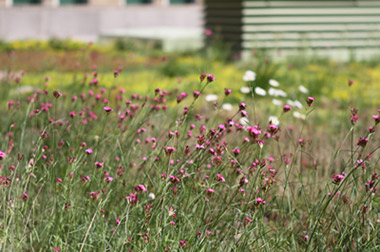"Green roofs" — designed gardens or planted meadows created on top of conventional roofs — are actually a beautiful "solution" for a common environmental problem like stormwater management.

Our company's 22,000-square-foot green roof was designed to be both lovely and low maintenance. It's planted with more than 25,000 carbon-dioxide-absorbing, oxygen-producing, drought-tolerant species of varying heights and textures, including grasses and sedum, which are well adapted to the local climate.
The green roof, which debuted in 2008 at our Fifth Avenue Place building in Pittsburgh, is one of the largest in the region and one of a handful located in downtown Pittsburgh.
It has helped to create a healthier environment in two key ways:
1. Rainwater management and runoff prevention: Pittsburgh gets about 37 inches of rain yearly on average. The roof's 180 tons of soil media absorb rainwater and snowmelt, helping to reduce "run-off" into the area's overburdened stormwater systems. Run-off can carry fertilizers, pesticides, sediments, oil and other pollutants from yards, streets and rooftops into streams and rivers. In summer, run-off from rooftops, parking lots and streets can even be warm enough to harm aquatic life in streams.

2. Lower energy usage and costs: The green roof helps to act as an insulating blanket that regulates both the roof and internal building temperatures, keeping Fifth Avenue Place warmer in winter and cooler in summer. It helps to reduce the need for heating and air conditioning, cutting our energy consumption and utility costs.
As another plus, green roofs typically last twice as long as conventional ones because they protect roof materials from damaging ultraviolet rays, seasonal climate conditions and general weather elements.